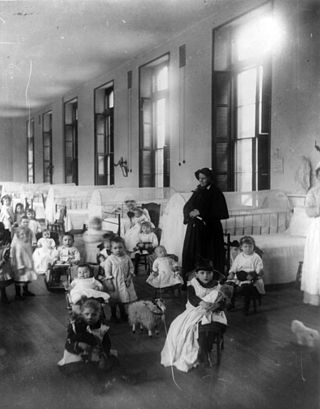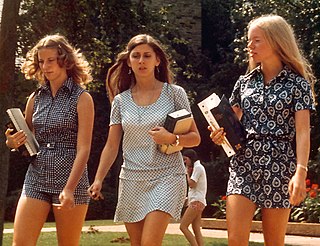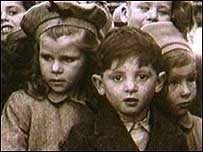
Adoption is a process whereby a person assumes the parenting of another, usually a child, from that person's biological or legal parent or parents. Legal adoptions permanently transfer all rights and responsibilities, along with filiation, from the biological parents to the adoptive parents.

Coming out of the closet, often shortened to coming out, is a metaphor used to describe LGBT people's self-disclosure of their sexual orientation, romantic orientation or gender identity.

A child is a human being between the stages of birth and puberty, or between the developmental period of infancy and puberty. It may also refer to an unborn human being. The legal definition of child generally refers to a minor, otherwise known as a person younger than the age of majority. Children generally have fewer rights and responsibilities than adults. They are classed as unable to make serious decisions.
An adult is a human or other animal that has reached full growth. The biological definition of the word means an animal reaching sexual maturity and thus capable of reproduction. In the human context, the term adult has meanings associated with social and legal concepts. In contrast to a non-adult or "minor", a legal adult is a person who has attained the age of majority and is therefore regarded as independent, self-sufficient, and responsible. They may also be regarded as a "major". The typical age of attaining legal adulthood is 18 to 21, although definition may vary by legal rights, country, and psychological development.

Occupational therapy (OT) is a healthcare profession that involves the use of assessment and intervention to develop, recover, or maintain the meaningful activities, or occupations, of individuals, groups, or communities. The field of OT consists of health care practitioners trained and educated to improve mental and physical performance. Occupational therapists specialize in teaching, educating, and supporting participation in any activity that occupies an individual's time. It is an independent health profession sometimes categorized as an allied health profession and consists of occupational therapists (OTs) and occupational therapy assistants (OTAs). While OTs and OTAs have different roles, they both work with people who want to improve their mental and or physical health, disabilities, injuries, or impairments.

Youth is the time of life when one is young. The word, youth, can also mean the time between childhood and adulthood (maturity), but it can also refer to one's peak, in terms of health or the period of life known as being a young adult. Youth is also defined as "the appearance, freshness, vigor, spirit, etc., characteristic of one, who is young". Its definitions of a specific age range varies, as youth is not defined chronologically as a stage that can be tied to specific age ranges; nor can its end point be linked to specific activities, such as taking unpaid work, or having sexual relations.

Foster care is a system in which a minor has been placed into a ward, group home, or private home of a state-certified caregiver, referred to as a "foster parent", or with a family member approved by the state. The placement of a "foster child" is normally arranged through the government or a social service agency. The institution, group home, or foster parent is compensated for expenses unless with a family member. In some states, relative or "Kinship" caregivers of children who are wards of the state are provided with a financial stipend.
Children's rights or the rights of children are a subset of human rights with particular attention to the rights of special protection and care afforded to minors. The 1989 Convention on the Rights of the Child (CRC) defines a child as "any human being below the age of eighteen years, unless under the law applicable to the child, majority is attained earlier." Children's rights includes their right to association with both parents, human identity as well as the basic needs for physical protection, food, universal state-paid education, health care, and criminal laws appropriate for the age and development of the child, equal protection of the child's civil rights, and freedom from discrimination on the basis of the child's race, gender, sexual orientation, gender identity, national origin, religion, disability, color, ethnicity, or other characteristics.
Child advocacy refers to a range of individuals, professionals and advocacy organizations who speak out on the best interests of children. An individual or organization engaging in advocacy typically seeks to protect children's rights which may be abridged or abused in a number of areas.

In England and Wales, a youth offending team (YOT) is a multi-agency team that is coordinated by a local authority and overseen by the Youth Justice Board. It deals with young offenders, sets up community services and reparation plans, and attempts to prevent youth recidivism and incarceration. YOTs were set up following the 1998 Crime and Disorder Act with the intention of reducing the risk of young people offending and re-offending, and to provide counsel and rehabilitation to those who do offend. Youth offending teams engage in a wide variety of work with young offenders in order to achieve their aims. YOTs supervise young people who have been ordered by the court to serve sentences in the community or in the secure estate. Sometimes, teams organise meetings between offenders and victims to encourage apologies and reparation.
A legal guardian is a person who has been appointed by a court or otherwise has the legal authority to make decisions relevant to the personal and property interests of another person who is deemed incompetent, called a ward. For example, a legal guardian might be granted the authority to make decisions regarding a ward's housing or medical care or manage the ward's finances. Guardianship is most appropriate when an alleged ward is functionally incapacitated, meaning they have a lagging skill critical to performing certain tasks, such as making important life decisions. Guardianship intends to serve as a safeguard to protect the ward.
Emancipation of minors is a legal mechanism by which a minor before attaining the age of majority is freed from control by their parents or guardians, and the parents or guardians are freed from responsibility for their child. Minors are normally considered legally incompetent to enter into contracts and to handle their own affairs. Emancipation overrides that presumption and allows emancipated children to legally make certain decisions on their own behalf.

Homelessness in Australia is a social issue concerning the number of people in Australia that are considered to be homeless. There are no internationally agreed upon definitions of homelessness, making it difficult to compare levels of homelessness across countries. A majority of people experiencing homelessness long-term in Australia are found in the large cities of Sydney, Melbourne, Brisbane and Perth. It is estimated that on any given night approximately 116,000 people will be homeless and many more are living in insecure housing, "one step away from being homeless". A person who does not obtain any shelter is often described as sleeping 'rough'.
A group home, congregate living facility, care home, adult family home, etc., is a structured and supervised residence model that provides assisted living and medical care for those with complex health needs. Traditionally, the model has been used for children or young people who cannot live with their families or afford their own homes, people with chronic disabilities who may be adults or seniors, or people with dementia and related aged illnesses. Typically, there are no more than six residents, and there is at least one trained caregiver there 24 hours a day. In some early "model programs", a house manager, night manager, weekend activity coordinator, and four part-time skill teachers were reported. Originally, the term group home referred to homes of 8 to 16 individuals, which was a state-mandated size during deinstitutionalization. Residential nursing facilities, also included in this article, may be as large in 2015 as 100 individuals, which is no longer the case in fields such as intellectual and developmental disabilities. Depending on the severity of the condition requiring one to need to live in a group home, some clients are able to attend day programs and most clients are able to live normal lifestyles.
Transitional age youth can reference both a developmental period and be a descriptor regarding eligibility for certain services. While there are variations in definitions, the age ranges do consistently overlap and include late adolescence to early adulthood. This range is considered a critical period in human development characterized by several changes socially, environmentally, and cognitively. During this time, individuals can experience changes in their social roles and function, family and peer supports, exposure to substance use, educational and vocational programs, as well as changes in healthcare providers from pediatric to adult settings.
An unaccompanied minor is a child without the presence of a legal guardian.
Adultcentrism is the exaggerated egocentrism of adults, including the belief that an adult perspective is inherently better. It is used to describe the conditions facing children and youth in schools, homes, and community settings; however, adultcentrism is not always based on a notion of being good or bad, in contrast to adultism.

The questioning of one's sexual orientation, sexual identity, gender, or all three is a process of exploration by people who may be unsure, still exploring, or concerned about applying a social label to themselves for various reasons. The letter "Q" is sometimes added to the end of the acronym LGBT ; the "Q" can refer to either queer or questioning.
Youth mainstreaming is a public policy concept. The Commonwealth of Nations describes it in this context:
National youth development is often the sole responsibility of the government ministry or department where the youth portfolio lies, whereas youth issues should be mainstreamed across various sectors and line ministries such as health, finance, economic development, housing, justice, foreign affairs, education, and agriculture.

Transgender youth are children or adolescents who do not identify with the sex they were assigned at birth. Because transgender youth are usually dependent on their parents for care, shelter, financial support, and other needs, transgender youth face different challenges compared to adults. According to the World Professional Association for Transgender Health, the American Psychological Association, and the American Academy of Pediatrics, appropriate care for transgender youth may include supportive mental health care, social transition, and/or puberty blockers, which delay puberty and the development of secondary sex characteristics to allow children more time to explore their gender identity. In Europe, some medical groups and countries have discouraged or limited the use of puberty blockers.









